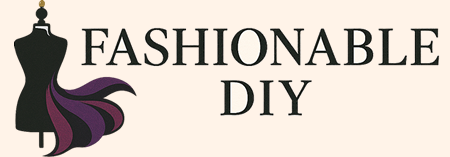From Runway to Home: DIY Trend Transformations for 2024
Fashion trends often make a bold impact on the runway, sparking creativity and influencing designs everywhere. These trends can be adapted for everyday life, offering fresh ways to update personal style without a big investment. For 2024, several key trends can be easily transformed into DIY projects, making high fashion accessible to everyone.
Fashion enthusiasts can explore creative projects that bring new styles into their homes. From innovative use of colors and textures to upcycling materials, there’s inspiration for everyone to personalize their living spaces. This approach not only brings unique style choices but also encourages sustainable practices by reusing and repurposing existing materials.
By engaging in these transformations, individuals can express creativity while aligning with current fashion movements. This trend emphasizes resourcefulness and offers a fun way to reinvent spaces and wardrobes alike. The result is a personalized environment that reflects individual style with a nod to the latest fashion inspirations.
Decoding Trend Lifecycles
Fashion trends move from the runway to everyday wear through identifiable stages. Recognizing and understanding these phases offers insights into how styles are adopted.
Identifying Emerging Trends
Trends often begin when influential designers introduce novel concepts on the runway. These initial designs showcase innovation in material or silhouette, capturing attention due to their uniqueness.
Simultaneously, social media platforms elevate awareness and create demand. Influencers and fashion enthusiasts share runway highlights, generating buzz and attracting early adopters who seek exclusivity.
Fashion weeks in global cities like Paris and New York play a significant role. They serve not only as showcases but as breeding grounds for the next big thing. During these events, designers seek to inspire others, influencing subsequent collections.
Sustainable textiles and diverse representation are becoming key components of these emerging trends, reflecting societal shifts. By understanding these elements, observers can pinpoint which styles will likely transition from high fashion to mainstream.
Understanding Trend Adoption
After emerging on the runway, trends enter the adoption phase, marked by increased visibility in retail spaces and media. This stage often sees collaboration between designers and retailers, making the designs available to a wider audience.
Mass-market brands reinterpret high-fashion pieces into accessible forms. This democratization allows average consumers to participate without the high costs associated with designer labels.
Trend adoption is influenced heavily by popular culture figures who endorse specific looks. When celebrities or media personalities embrace a style, it accelerates its acceptance among the general public.
A commitment to diversity is essential in this phase, as inclusive marketing and design considerations ensure broader reach and resonance. By addressing different body types and ethnic backgrounds, brands cultivate a larger, more engaged audience.
Assessing Your Personal Style
Understanding personal style helps individuals translate fashion trends into their own lives effectively. By evaluating their current wardrobe and defining specific style goals, they can create a wardrobe that reflects individual tastes and preferences.
Analyzing Your Current Wardrobe
The first step in personal style assessment involves looking at one’s existing wardrobe. This involves identifying items worn frequently and those that remain untouched. Clothing can be categorized by type, such as casual, formal, or seasonal, to grasp what types are predominant or lacking.
Reflecting on favorite pieces also provides insight into personal preferences related to colors, fabrics, and cuts. This stage can reveal patterns indicating specific style tendencies, aiding in recognizing what resonates personally.
A closet audit can uncover both favorite items and those that no longer represent their style. By understanding these aspects, individuals can make informed decisions about future purchases and style development.



